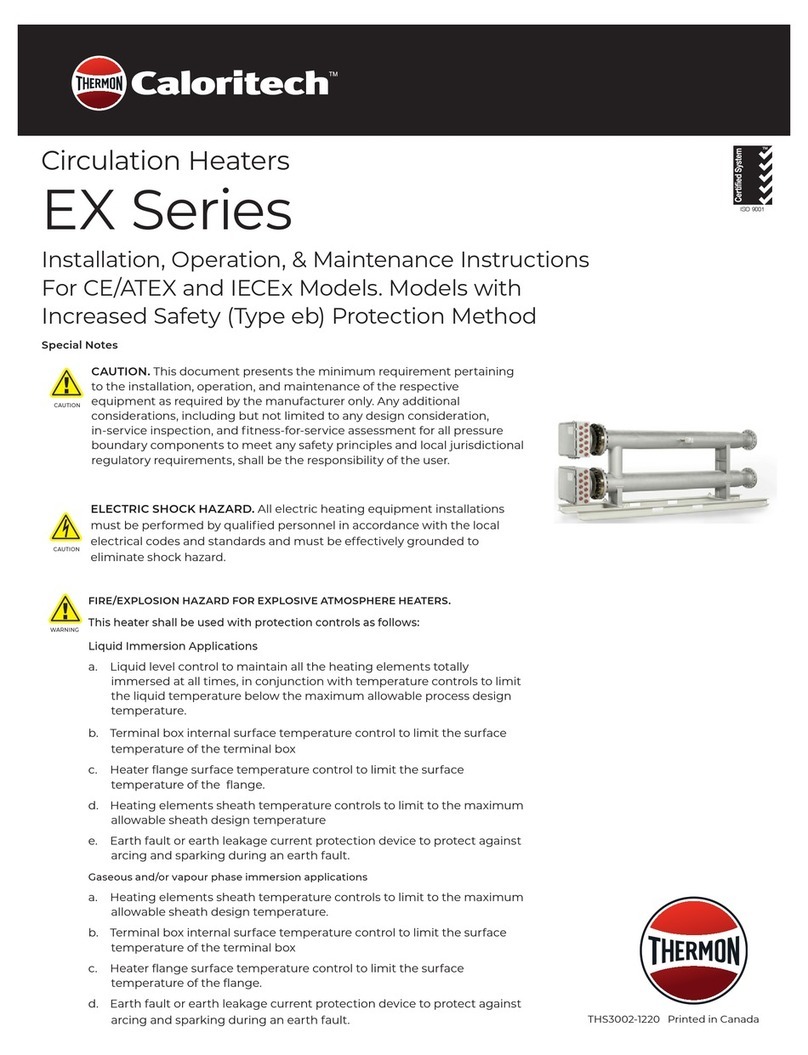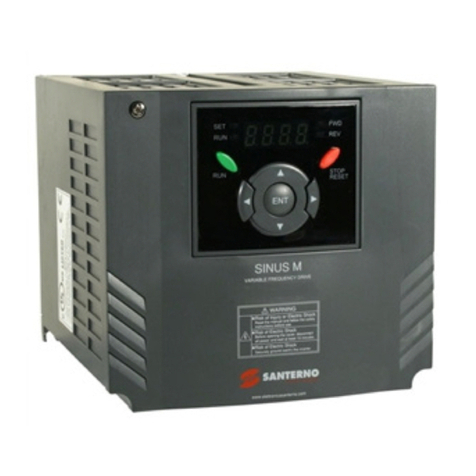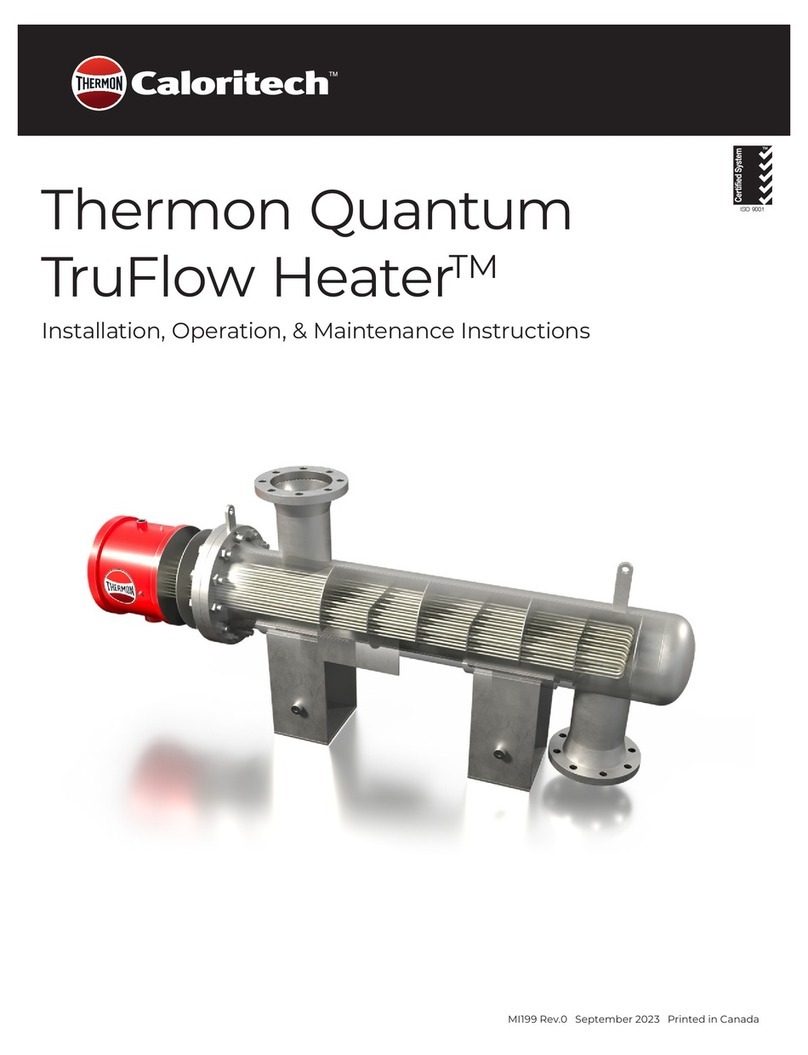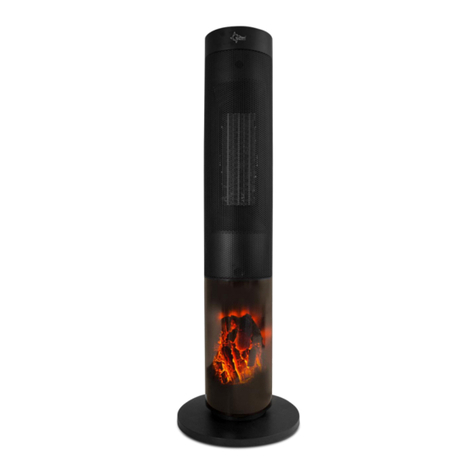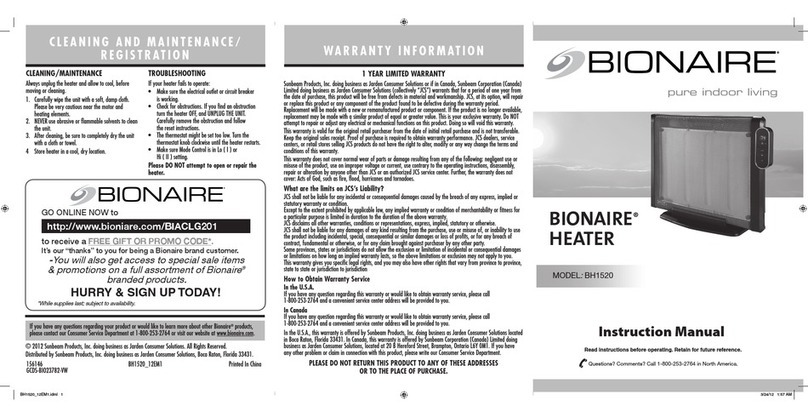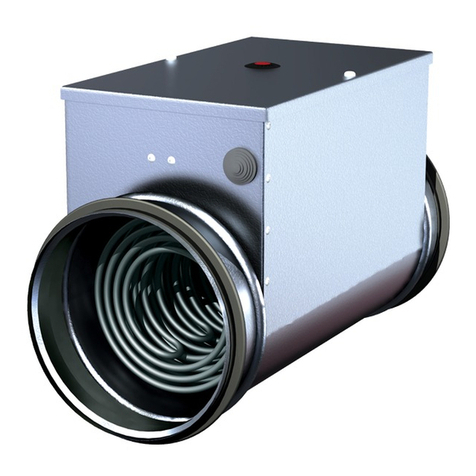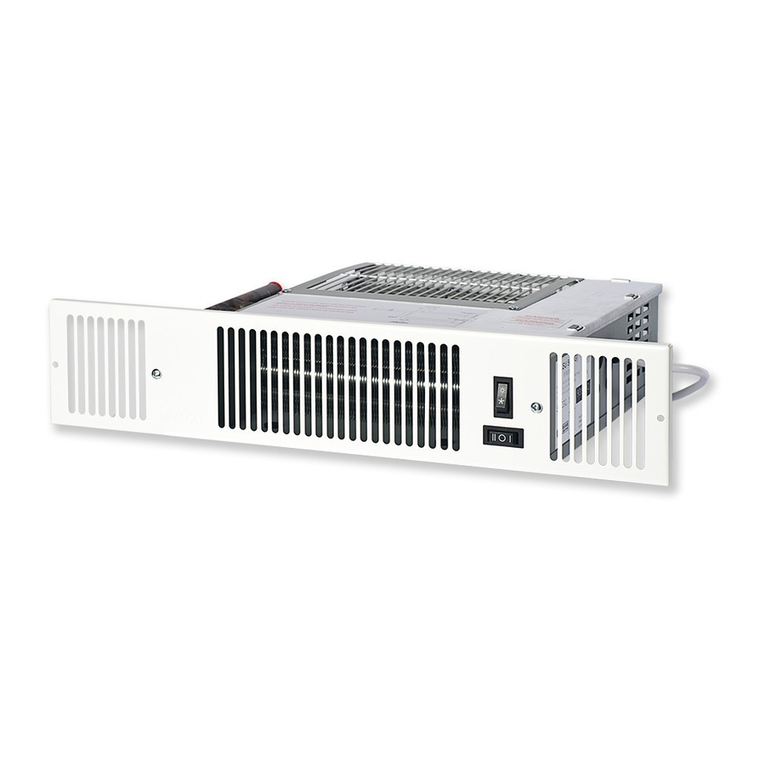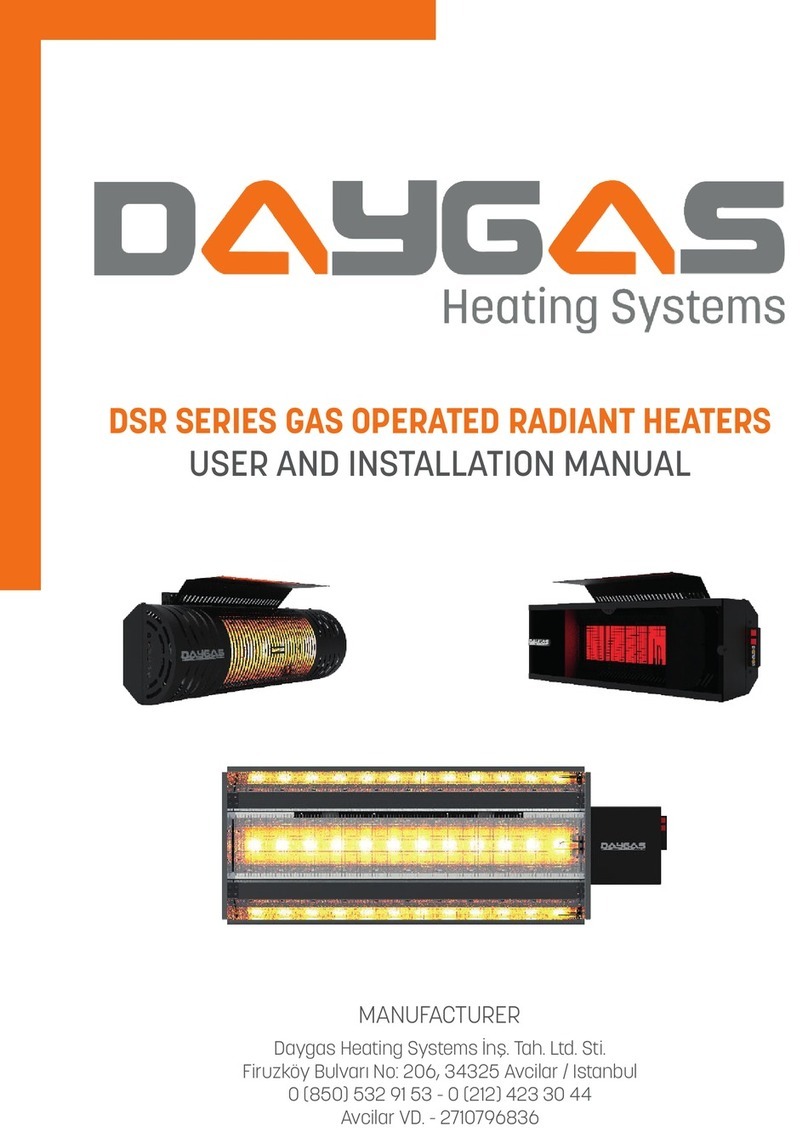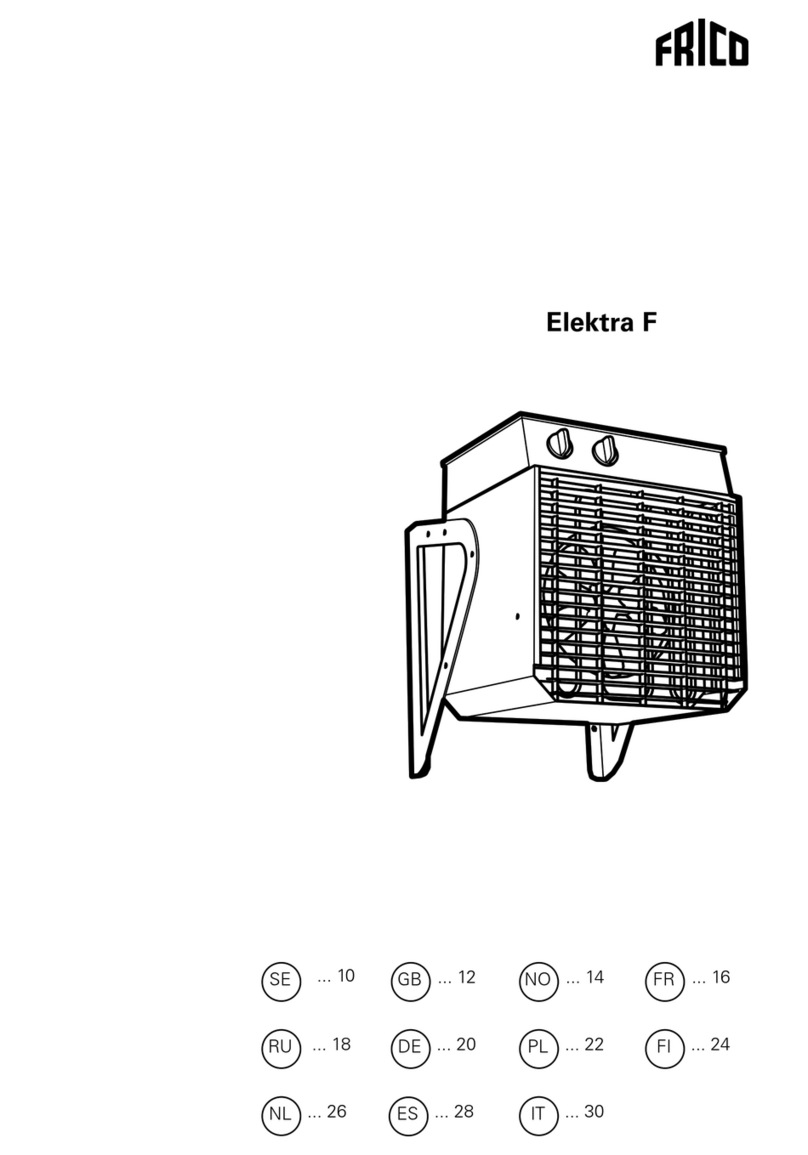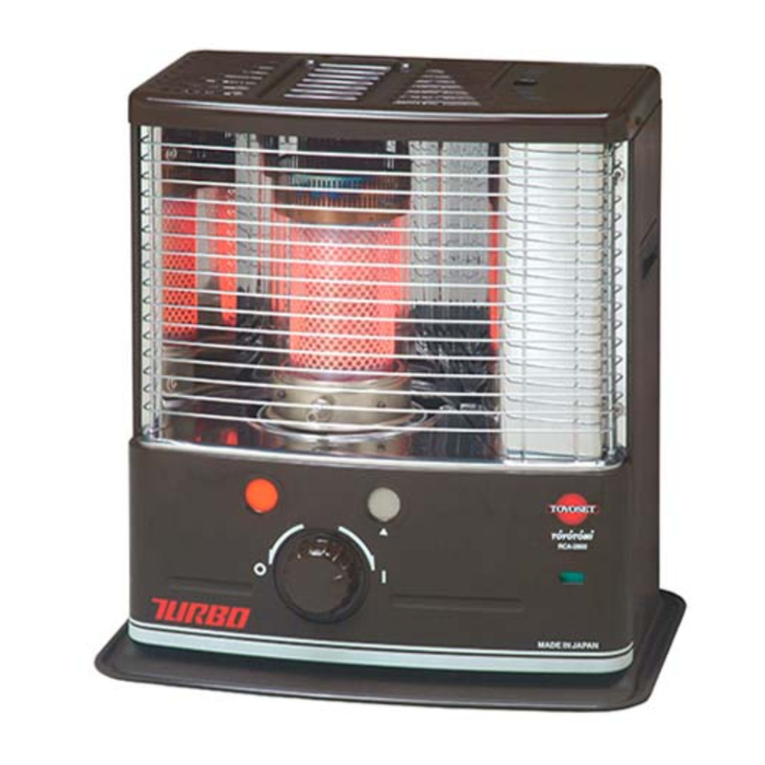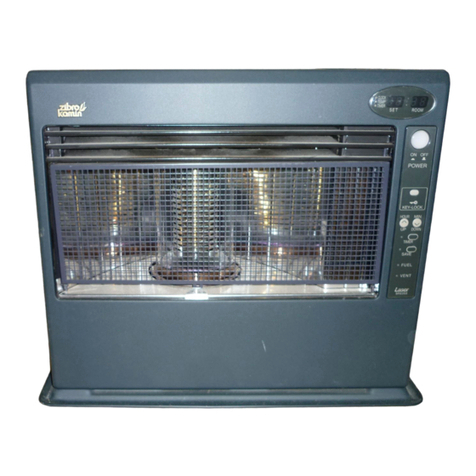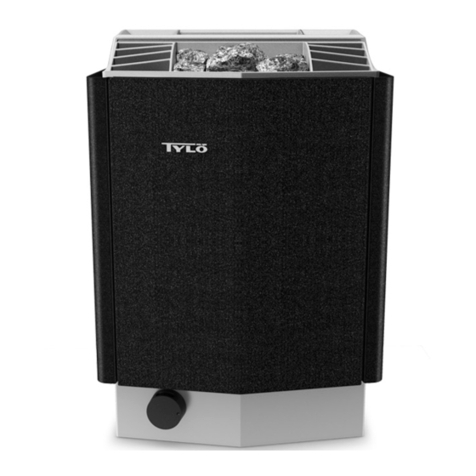
1111
Operation
D. OPERATION
D.1 Introduction
The switch heater is a gas red, hot air heating system
that keeps a turnout clear of ice and snow during
winter storms by blowing hot air, between the stock
rail and moving points, at the tie plates on which the
points slide, and at the gage rods.
D.2 Modes
The heater can be operated in the following modes:
1. MANUAL - by toggling the mode selector switch
to “MANUAL”, the heater will turn on and operate
continuously. If installed, the rail thermostat will
cycle the burner on and off as required to maintain
the rail temperature.
2. AUTO – With the controller congured for LOCAL
AUTO MODE, toggling the mode selector switch
to “AUTO/REMOTE”, and with an EMS module,
precipitation and ambient temperature sensor
installed, the heater will turn on or off as required
based on the weather conditions. If installed, the
rail thermostat will cycle the burner on and off as
required to regulate the rail temperature.
3. REMOTE RTC- by toggling the mode selector switch
to “AUTO/REMOTE” and with a Rail Trafc Control,
RTC (dispatcher) operated control relay contact wired
to terminals A1 and A2 of the control and indication
terminal block. With RTC timer disabled, the heater
will operate continuously while the RTC contact is
closed, if the RTC timer is enabled, the heater will run
for the duration of the RTC timer then stop. RTC can
restart the heater for additional run time by resetting
the request. If installed, the rail thermostat will cycle
the burner on and off as required to maintain the rail
temperature.
4. REMOTE SCADA - With the controller congured for
REMOTE SCADA MODE, toggling the mode selector
switch to “AUTO/REMOTE” with the heater connected
to a Supervisory Control and Data Acquisition, SCADA,
network via the controllers’ RS-485 communications
port, and congured with a Remote Control and
Monitoring System, RCMS, software, the heater will
operate automatically.
If installed, the EMS module, precipitation detector,
ambient temperature sensor and rail thermostat
provides inputs to the RCMS software.
5. OFF – to disable the heater, toggle selector switch to
“OFF”.
D.3 Start-Up Sequence (All Modes)
Once a start request is received the control sequence begins.
NOTE: If the controller is in ‘REMOTE RTC’ mode then it waits
for the ‘DELAY START’ time before initiating.
Table 1 – All Modes
Conditions/Sequence Status LED
Heater is in an operational mode not OFF. ENABLE
Cycling thermostat is cold or closed. CYCLING
Motor contactor closed, fan starts. MOTOR
Air pressure develops, air switch closes. AIR SW
DSI requested. HEAT
Main gas valve opens. FSR CHECK
Run indication contact closed. RUN
To conrm the heater operation, the burner remains lit and
the rail thermostat status is ignored for the rst 2 minutes.
Normal operation Heater runs as long as requested.
D.4 Occurrences During Normal Operation
NOTE: The rail thermostat closes when the rail temperature is
above 9°C (49°F) and opens when below 3°C (37°F).
1. As long as the rail is cold and the thermostat is open,
the burner remains lit. Once the rail warms and the
thermostat closes, the burner is extinguished. This
cycle repeats as required while the heater operates.
If the rail temperature remains warm for more than
the post purge time then the fan is turned off. The
run indication is maintained during this time.
2. If the heater is in ‘REMOTE SCADA’ mode and
the ‘RCMS’ software is requesting performance
operation, the burner will remain lit regardless of rail
thermostat status.
NOTE: The cycling thermostat limits the heated air
temperature to a maximum of 193°C (380°F). Under
normal circumstances the air temperature remains
below this limit.
3. If the heated air temperature becomes excessively
hot, the cycling thermostat limit opens, and the
burner is extinguished immediately. Once the air
cools and the thermostat closes the burner is lit and
heating resumes. Run indication is maintained during
this time.





















